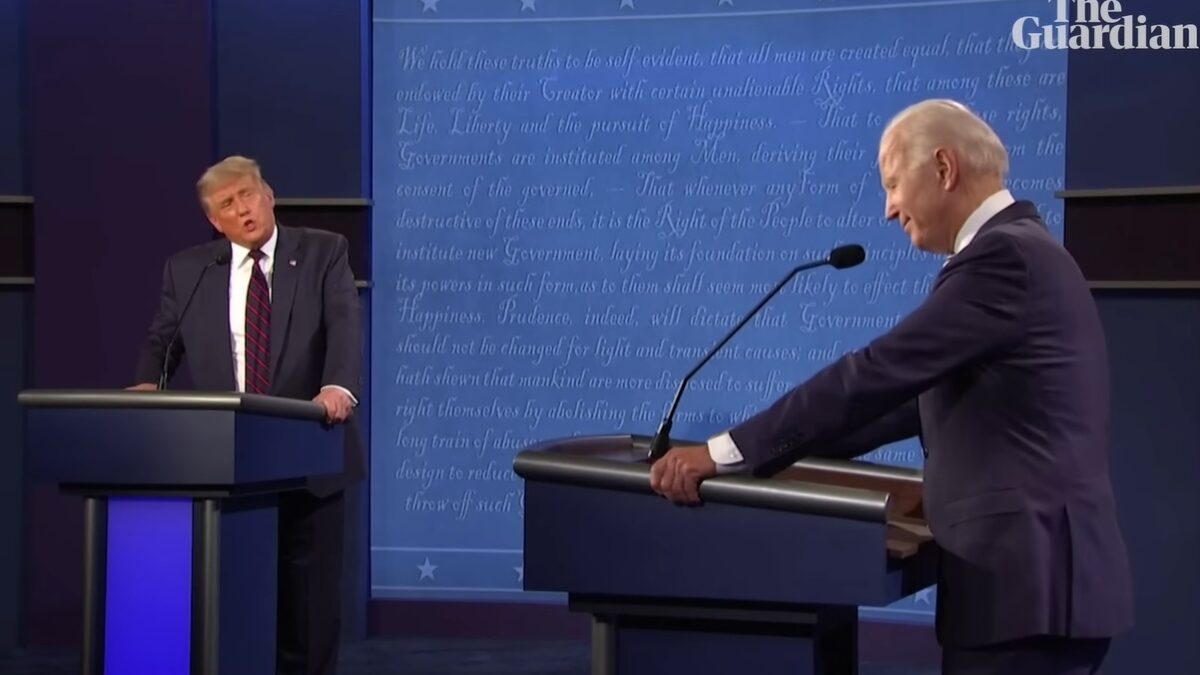
In school, one class of mine had the task of assembling a writing portfolio over the course of a semester. The writing could be of any sort—short stories, poems, essays, what have you—but at the end of the term, there had to be the requisite number of items. When the date drew near, my best friend realized that he was going to come up short. Very short. So he hit on the idea of writing a whole mess of haikus to make up the difference. He completed enough of the Japanese three-line poems the night before the due date and proudly handed in the portfolio the next day. Our teacher looked at the work, gathered all of the haikus into her hand, stapled them together, and declared: “That’s one.”
Stronger Together: A Blueprint For America’s Future, by Hillary Clinton and Tim Kaine, seems to have been constructed with a similar writing process.
Readers will discover immediately that this “book” is a hastily assembled collection of speeches and statements, categorized by topic and prefaced with anodyne introductions. To say that it was cobbled together does a disservice to honest cobblers.
Have you ever listened to a campaign speech and thought, “Boy, I wish this could go on much, much longer?” Have you ever read a book and wished it had the vague optimism of a State of the Union address? Do you go through life yearning to hear buzzwords and the names of swing states repeated all the day long? If so, Stronger Together may be the book for you.
More Calculated
None of this is to say that a compilation volume would necessarily be a bad thing, if presented as such. Calvin Coolidge’s Have Faith in Massachusetts was a minor success in 1919 containing nothing but the then-governor’s speeches. In 1999, former President George H.W. Bush published All The Best, a collection of his letters, and the book was well-received. Here, though, by pretending their book is some sort of comprehensive work, Clinton and Kaine increase expectations and decrease quality. The whole is less than the sum of its parts.
The seams show most clearly when the authors repeat themselves. For example, they discuss “patriotic billionaires like Warren Buffett” when explaining why rich people should pay more taxes. On the next page, they explain that their proposed Buffett Rule is “named after Warren Buffett, the billionaire.” Either they believe their readership has no short-term memory, or the book could use another round of editing.
The book shows itself to be a jumped-up campaign speech in other ways. The brief candidate biographies that begin the book sound like a word cloud of feel-good phrases. Clinton’s recitation of her family history reaches back to her grandfather, an immigrant factory worker born in 1879. As she establishes her somewhat attenuated working-class credentials, she sprinkles middle American virtue words along the way: “football…Penn State…Navy…small business…the kindness of others…teacher…Methodist.”
This is all about her parents’ upbringing, not hers, but it’s a nice story just the same. Kaine’s backstory is one of the few Kaine moments in the entire book, but it also stretches to include a working-class history to the career politician’s life. His father was in management, but the people he bossed were “union-organized.”
There are more warm fuzzies to follow: “ironworking…stockyards…missionaries in Honduras…carpentry and welding.” Kaine, like Clinton, puts great effort into showing how he is not an elitist. “Why, look here,” the credulous reader is expected to exclaim, “these Ivy League-educated lawyers are just like you and me!”
Fitter, Happier, More Productive
No one is intended to read this book in its entirety. I did it anyway, and discovered Clinton’s vision—and here I will dispense with the notion that Kaine had anything to do with this book beyond the introduction—of how she will use the power of the federal government to make you, the average moron, into a stronger, fitter, more productive member of a harmonious American society. Part of the State-of-the-Union-esque quality of the book is that Clinton proposes a new federal program as the solution to everything. Uncle Sam is going to pay for your health care. And your college. And your kid’s preschool.
That sort of thing is standard campaign fare on the Left. Clinton goes farther, though, in promising to fix even more of your problems. She proposes, for example, to “toughen the U.S. Department of Education guidance on bullying to protect children with autism from harassment.” That’s right: In a second Clinton administration, the power and majesty of the federal government will be deployed against schoolyard taunts. (It almost goes without saying that she never explains which Constitutional provision grants the president this power.)
Another weird theme throughout the book is that Clinton frequently includes vignettes from the lives of ordinary Americans, whose existences would be vastly improved by her administration’s actions. The trick is familiar enough from stump speeches: the politician finds (or pretends to find) some Average Joe whose sad life story illustrates the policy point being made.
Translating it to a book is odd, though, in that the reader is never sure whether Clinton is talking about an actual person she has met, or creating a fictional example like the Obama campaign’s famous “Life of Julia.” Real or fake, they all look forward to better lives when micromanaged by the federal government.
Pragmatism, not Idealism
Bill Clinton introduced America to the “New Democrat” in 1993. They weren’t like those old tax-and spend, big-government liberals, he promised. They were pragmatic, friendly to business, and supportive of capitalism. They just wanted to take the edge off it a little, that’s all. Americans bought it, and elected him twice. Bill and Hillary have surely proved their commitment to capitalism, accumulating a massive fortune since leaving the White House in 2001. Hillary also continues the pro-business message in her rhetoric, if not in substance.
All of the new programs Clinton proposes must be funded, but she is very reluctant to mention the source of such funding. Everything, it seems, will be paid for by taxing the rich. Bernie Sanders made taxation of millionaires and billionaires a mantra in his campaign. Clinton lifts the phrase but, mindful of her better-heeled constituency, she tweaks it, claiming instead that “multimillionaires and billionaires” will foot the bill.
She also rarely utters the word “spending.” Moderate Democrats don’t spend, they invest. This form of investment has nothing to do with the word’s actual definition—no one thinks Clinton’s investments are a way of actually earning money, like the investments in your 401(k). No, these “investments” are just spending by another name and, in keeping with the repetitive nature of the book, it is a word she mentions 173 times. Clinton has a reputation as a savvy investor since her time as a cattle future speculator back in Arkansas, but even “patriotic billionaire” Buffett would have trouble managing all of these investments.
Does Clinton want to change the laws that benefit people she disagrees with? Never! All she wants to do is “close loopholes.” In her telling, the U.S. Code is nothing but loopholes. The word used to mean an ambiguity or oversight in the law, something the legislature never intended to create, but that emerged accidentally through the lawmaking process. In Clinton’s poll-tested Newspeak, it means a law that is bad, somehow.
There’s a Halliburton Loophole, a carried interest loophole, an unnamed oil and gas loophole (probably referring to depletion allowances), a Bermuda reinsurance loophole, a Charleston loophole, and many more. The only thing that unites these code provisions is that most are not loopholes at all, but deliberate legislative choices.
In a Cage on Antibiotics
However it will be funded, the message of this book is that Clinton’s expanded government will manage your life and do a better job of it than you could. Everything is subsidized, managed, regulated, and taxed. In a system already overrun with voluminous regulation and contradictory goals, Clinton’s solution is more of the same. In the 1990s, she and Bill tacitly admitted that top-down, one-size-fits-all solutions from Washington did not work. But that does not mean she wants to leave average Americans to our own devices. No, the solution is more regulation, finer-grained control, more detailed solutions, and more bureaucrats to manage it all.
The average voter, to Clinton’s mind, has access to too many scary opinions. She would fix that, by amending the Constitution to limit free speech and protect us from hearing other people’s ideas about whom we should elect. We have too many choices for post-secondary education, so Clinton would shut down the for-profit colleges that the Wellesley grad finds hopelessly tacky. We have too many choices in power generation, so Clinton will shut down the ones she doesn’t like. There will be new jobs for people working in those “dirty” coal and oil industries, but they will be provided through government-approved job training programs and “public-private collaborations.”
Stronger Together is Clinton’s deceptively bland vision of an America where government cares for citizens from cradle to grave. Their lives are managed by the superior minds assembled in Washington DC. They are kept happy with paid vacations, “free” college education, and consequence-free sex. It is easy to be lulled by the soporific prose and recurring, neutral-sounding buzzwords, but if you persevere in reading the whole thing, this slim yet terrifying volume may give you a hint of what Clinton will offer the nation after her now all-but-inevitable victory in November.









